Gentle Readers: Today I welcome Tony Grant who has written for us a post on Box Hill. I had the pleasure this spring to spend a day with Tony, as he squired me around Southampton, Portsmouth and Box Hill – it was a rainy, quite miserable day, but the touring was grand, the company terrific! I’ve been to most of the Jane Austen sites – but not to anything we saw this day, from the Dolphin Inn to The Victory, and to the top of Box Hill – it was a world-wind tour of Jane, History, and Geology all rolled into one – Tony here tells of Box Hill, the infamous location that Austen chooses to place her Emma in one of her more self-illuminating “badly-done” scenes… with heartfelt thanks to Tony for the tour to the heart of it all…
**************
Box Hill in Jane Austen’s Emma
On Monday 26th May this year, Deb Barnum [a.k.a. Jane Austen in Vermont] and I drove up to the top of Box Hill. The quickest route is to come off The London Road, known as the A24, which sweeps past the base of Box Hill, paralleling the River Mole, which itself, arcs around Box Hill to the south and west. The A24 leads south from Epsom towards Dorking. A mile before Dorking we turned left at Rykas Café, which is a popular venue for motorcyclists. We took a small B road, overhung with trees. An old rusty sign leaning out of the hedgerow on the left pointed its finger to the summit of Box Hill. We turned into a wooded and high hedged lane which began to immediately rise steeply, bending towards the right. We passed a weathered red brick cottage on the left, set within a ragged, vibrant country garden surrounded by high, smoothly manicured hedges bulging and swelling outwards in billowing shapes. The road soon opened out onto steeply rising chalk grassland. A precipitous drop on our right formed and a steep incline to our left reached upwards.
 Mist and cloud swirled around us as we mounted the hill along the switch back road. The corners made us turn almost back on ourselves but always took us to steeper and higher levels. The drop to the right revealed hedges of box and scrub, clinging tightly to the side of the hill, interspersed with finely cropped grasses. Chalky outcrops appeared to our left as we rose higher and higher amongst the mist and low clouds. As we neared the summit, trees and woodland gathered around us again. The squat whitewashed National Trust shop and café appeared in front of us and a car park was situated on the left amongst Scots Pines and firs.
Mist and cloud swirled around us as we mounted the hill along the switch back road. The corners made us turn almost back on ourselves but always took us to steeper and higher levels. The drop to the right revealed hedges of box and scrub, clinging tightly to the side of the hill, interspersed with finely cropped grasses. Chalky outcrops appeared to our left as we rose higher and higher amongst the mist and low clouds. As we neared the summit, trees and woodland gathered around us again. The squat whitewashed National Trust shop and café appeared in front of us and a car park was situated on the left amongst Scots Pines and firs.
We parked the car and I showed Deb the way to the viewpoint we had come to see. We were seven hundred and thirty-five feet above the River Mole and Dorking town was to our right. We could see far into the distance across the
woodlands and fields of Surrey. I suggested Deb take the part of Emma Woodhouse, who in Jane Austen’s novel of that name, visited this very spot with her friends and neighbours but she would have nothing of it. She would be Mrs Elton and nobody else. Deb stood and acclaimed the world standing high on the stone viewing plinth Leopold Salomons had erected in 1914, arms wide to the sky.
It was very near here that Emma Woodhouse and Mrs Elton and their party of friends alighted to picnic at the top of Box Hill in Jane Austen’s novel, Emma. The groups from Highbury and Hartfield, in the novel, have an inauspicious start to their trip, an inauspicious execution of it and an inauspicious end to it. It is a turning point in all their lives. The surface veneer begins to slip from various relationships. Reality begins to poke through Emmas carefully stage managed attempts of conducting other people’s lives. Nothing becomes certain. The Sucklings do not arrive at Hartfield and Mrs Elton’s plan of visiting Box Hill to show the Sucklings the views seems to lose its purpose but she has another thought and becomes adamant about the trip going ahead. The Sucklings can go another time. Mrs Elton’s idea about a trip to Box Hill has an effect on Emma. Emma does not want to be outdone. She has never visited Box Hill before and decides that,
“she wished to see what everybody found so well worth seeing…”
She discusses the trip with the amiable Mr Weston. He is perhaps too amenable and accommodating. In discussion with Mrs Elton he gets the approval of that lady that the two parties, hers and Emma’s join together for one combined trip to Box Hill. Emma is unhappy with the arrangement but as they will all go in different carriages with the people of their own choice perhaps it will not be so bad, she reasons. It would have been better if the horse that was to pull Emma’s carriage had stayed lame of course and so preventing Emma from going, but a quick recovery from this condition, inconveniently perhaps, gave no excuse for Emma not to proceed. A lame horse is a rather lame Jane Austen joke, I think, sprung in the midst of such serious matters. Tongue in cheek comes to mind – a joke at Emma’s expense between Austen and the reader.
Seven miles were travelled in expectation of enjoyment, and everybody had a burst of admiration on first arriving; but in the general amount of the day there was deficiency. There was a languor, a want of spirits, a want of unison, which could not be got over. They separated too much into parties.
This is an interesting passage because Jane Austen seems uncertain. She lists a litany of possible causes for the lack of harmony. She can’t herself decide on one exact cause. This adds realism to the situation. We cannot explain everything in real life and neither can Austen in this scene in Emma.
Austen has Frank Churchill perpetrate, perhaps, a cruel joke, to divert attention from himself and Emma. He asks the ultimate psychoanalysts question, in Emma’s name of course. He whispers to her:
“Our companions are excessively stupid. What shall we do to rouse them? Any nonsense will serve. They shall talk….”
And then for all to hear,
“Ladies and gentlemen, I am ordered by Miss Woodhouse (who, wherever she is, presides,) to say that she desires to know what you are all thinking of.”
Emma immediately tries to nervously laugh the question off. She is taken unawares by this and denies she has anything to do with any such request. There is a desperation in her voice. There is almost fear. She knows she could not, “stand the brunt,” of such raw honesty.
“Let me hear any thing rather than what you are all thinking of.”
There are one or two perhaps, (glancing at Mr Weston and Harriet,) whose thoughts I might not be afraid of knowing.”
Who can or would want to express their real thoughts at the drop of a hat? Is it possible for anybody to express their exact thoughts as they are thinking them? Our relationships would be very strange and probably be put under incredible stresses if we did. Emma is naïve to think even that the thoughts of Mr Weston and Harriet would bear hearing. Our subconscious level is below manners and the social veneer we all carry. It would be delving into our primal depths. This is the sort of thing that Sigmund Freud tried to study and explore. Frank Churchill is being cruel and he knows that nobody would answer this, certainly not himself. Imagine what sort of story would be written if everybody told their thoughts? It is almost the final nail in the coffin of harmony and wellbeing amongst the group on Box Hill.
Deb and I certainly didn’t even approach such a question. Deb, as I said before was just happy to be Mrs Elton and of course Mrs Elton and Mr Elton walked away on their own at Frank Churchill’s question. I wonder what Mrs Elton thought about it? Maybe Deb knows. As for my first suggestion to Deb to play Emma on the top of Box Hill; Emma is obviously an anti-hero. Neither Deb nor anybody else I have spoken to, would willingly be an Emma.
Geology:
Standing high on Box Hill you notice the thinness of the grass under your feet. You see flints sticking out of the pathways and white chalk is revealed in patches everywhere. Box Hill is a geological phenomenon. The cretaceous chalk that comprises Box Hill, was laid down as the microscopic calcareous bodies of plankton on the floor of a tropical sea between 100 and 65 million years ago. Globally chalk is a rare rock formation so it makes the North Downs, of which Box Hill is part, a unique geological area. Originally it was laid as a horizontal chalk platform of uniform thickness. During the period the Alps were formed, about 50 million years ago, upheavals in the Earth’s crust forced this chalk layer into a vast dome. The northern most edge was where the North Downs are now. The dome stretched over to France. The British Isles were joined to the mainland of Europe then. Chalk, being a porous and relatively soft rock, it has been eroded and worn down by the actions of water. All that remains are the North Downs stretching from Guildford in Surrey, just south of London into the northern part Kent and The South Downs stretching from a line formed by the Itchen River between Southampton and Winchester in the west to The Cliffs of Dover on the coast of Kent in the East.
Box Hill Bridge, Dorking – by Alfred Charles Jerome Collins
image: Dorking Museum
On the steep chalk slopes of Box Hill, the 394 feet escarpment and on the sides of the surrounding valleys, downland plants flourish. Because chalk is porous it hardly ever dries out, even in drought conditions which might affect the surrounding landscape. This means plants always have a ready water supply. It is said that plants on chalk downland have a brighter richer colour because of this. Plants such as hawk weed rock rose, bird’s foot trefoil, milkwort, squinancywort and dwarf thistle all thrive in this environment. Box woodland, which is extremely ancient, grows on the steep chalky, thin soiled slopes. It is one of the only trees that will grow in these conditions. The escarpments and valley sides face southwards which means it is often a hot exposed environment. Box Hill derives its name from the box that grows on it. Box has been around since probably the end of the Ice Age and perhaps before that. The characteristics of chalk downland are unique to Box Hill’s geology. There are dry valleys cut into the north side of the hill. This is where the River Mole, which runs under the escarpment of Box Hill has cut its course in the past and where drainage streams and rivulets flowed into it, but because the rocks are porous any streams and rivulets that remain are no longer on the surface but underground. Chalk is easily eroded so it gives a gentle undulating quality to the general landscape. On the steep slopes there are patches of bare chalk and these can gleam white in the sunshine.
Chalk from the North Downs has been quarried in the past. Surrey County Council had a quarry at Brockham nearby to Box Hill. It was used to quarry chalk that could be burned in kilns to produce lime and cement. These quarries, many of them now abandoned have been left to regenerate, plants and wild life and some are now places of special scientific interest. The quarries, because they have sides cut into the chalk, show the structure of the chalk particularly well.
image: National Trust – Box Hill
Chalk Down land is a special type of grassland habitat that is actually man made. Over centuries, sheep and cattle have been grazed on them. This has deforested the downland to a certain extent allowed unique wild flowers and animals, only found on downland, to flourish. To keep Box Hill’s downland quality a flock of sheep and a herd of cattle are grazed on it. The sheep on Box hill are Black Welsh Mountain sheep. There are twenty eight sheep, which are moved around the hill on a rotation. Because sheep are ‘nibblers’ they leave the grass short and even. There are also cattle, which graze very differently. Cows use their tongues to rip plants up, which leads to more tufted grassland. The breed used on Box Hill are called Belted Galloway cattle. They can be recognised by their fluffy black bodies with a thick white belt around their middles. Four males graze Box Hill and nearby Headley Heath is grazed by three males and nine females. The animals are moved around Box Hill all the time. If it ceased to be a grassland habitat, trees and woodland would take over and cover it. This would occur through a natural process called succession. This downland supports a great diversity of invertebrates including fourty one species of rare butterflies. The soil is good for snails too. Snails require the calcium in the chalk to form shells.
Box Hill has a varied history. The old fort, that can still be seen at the top of Box Hill, was built in the 1890’s and is one of thirteen that were built across the North Downs, collectively known as the London Defence System.. They were to be the last defence of London if Britain was ever invaded. In the late 1890’s there was a treaty with France called the entente cordial but Germany was beginning to increase its strength and many of the stresses and strains that eventually lead to the first world war were beginning to stir. Previously, in the 1860’s, during Palmerstone’s premiership, many forts had also been built around the coast of Britain to defend from a perceived threat from France then. The forts on Box Hill and across the North Downs were never used. I have visited and actually stayed in one of the forts, the fort on The Hogsback just outside of Guildford. It is owned by Surrey County Council and is used for parties of school children to stay at to enable them to explore and study wildlife and local history. The fort on The Hogs back contained officers quarters just outside the ramparts of the fort and a barracks for a small contingent of soldiers inside. The forts were basically armouries for storing shells, and explosives. They comprised of strongly reinforced chambers with specially constructed shelving. The one on The Hogsback had a large area of flat land in front of it on which artillery could be positioned if required. These forts were situated high on the downs,as much as seven hundred feet above the surrounding countryside. The one on the top of Box Hill is dilapidated now and barred from entry. A rare breed of bats has lodged itself inside the fort and cannot be disturbed. To continue the military theme, there are stepping stones that cross the River Mole at the base of Box Hill. During the second world war they were removed to impede invading forces crossing the river. In the area you can also see examples of pill boxes, which were concrete bunkers installed with heavy machine guns and concrete tank traps. Interestingly at the top of Guildford High Street, next to the railway line cutting, hidden amongst dense trees, nowadays you can see a whole swathe of Second World War tank traps covered in ivy and moss.
Literary Connections:
Box Hill has inspired a number of classic authors, not just Jane Austen as I mentioned at the start. John Keats, Daniel Defoe, George Meredith and Robert Louis Stevenson all visited Box Hill. J. M Barrie used to sit on one of the slopes of Box Hill getting inspiration for Peter Pan.
The Romantic Movement, led by William Wordsworth, popularised communing with nature and Box Hill became a popular place to visit. John Keats completed his poem Endymion (1816) while staying at the Burford Hotel next to Box Hill. Its famous opening lines have inspired generations,
“A thing of beauty is a joy forever
Its loveliness increases; it will never
Pass into nothingness; but still will keep
A bower quiet for us….”
John Logie Baird, the inventor of television, lived in the Swiss Cottage at the top of Box Hill. In the 1930’s he conducted his early experiments in television from the top to the valley below.
The strangest individual connected with Box Hill is Major Peter Labelliere. He requested that he be buried upside down on the top of the hill. He believed that the world would go topsy-turvy and that one day he would be the right way up. His other dying wish was that youngest son and daughter of his land lady should dance on his coffin.
One thing you notice, as a driver, on Box Hill is when you descend, especially, winding along the switch back road on steep sided slopes and cliffs that the road surface has had strange, almost aboriginal markings painted on it. Here and there are the hoops of the Olympic movement. In 2012, The Olympics came to London. However, many events were not confined to the capital. The cycling road races were staged in the beautiful leafy, countryside of Surrey. Box Hill was the steepest part of the long distance cycling road race, hence the artistic markings that still adorn the road surface of the road..
On our way back to London, I drove Deb towards Kingston. We passed through an area called Malden Rushett, near the Chessington World of Adventures. There is a small industrial estate, farming land, a pub called The Blue Anchor and an extensive garden centre in Malden Rushett nowadays. The long straight road that passes through this area from Dorking to Kingston was a coaching road in the 18th century. Nothing apart from fields with cattle and maybe wheat growing would have existed there then. If you look on a map you can measure from Malden Rushett cross roads, seven miles to Box Hill, sixteen miles to London, twelve miles to Richmond and nine miles to Kingston – the exact distances from Highbury and Hartfield that Jane Austen reveals in Emma. I mentioned this to Deb as we drove along. I think she was impressed.
All images c2014 Tony Grant unless otherwise noted.

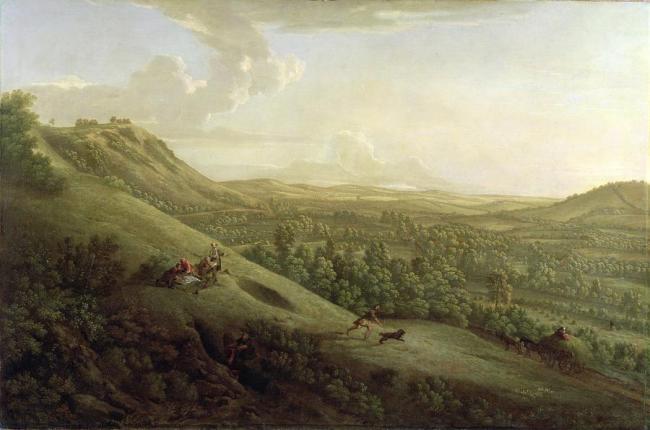
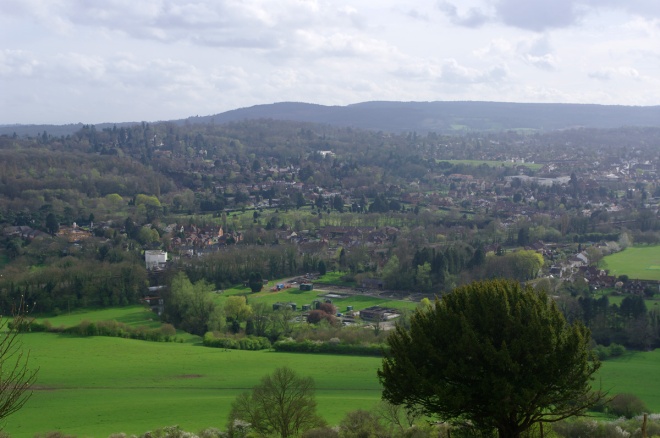
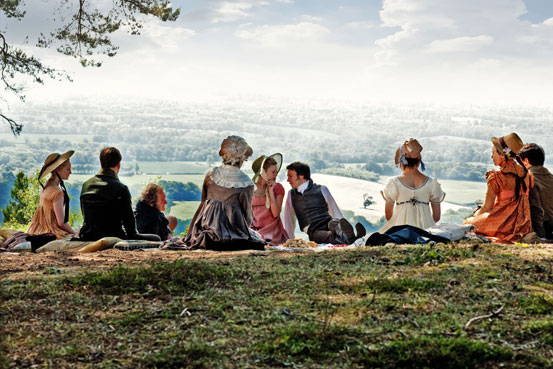
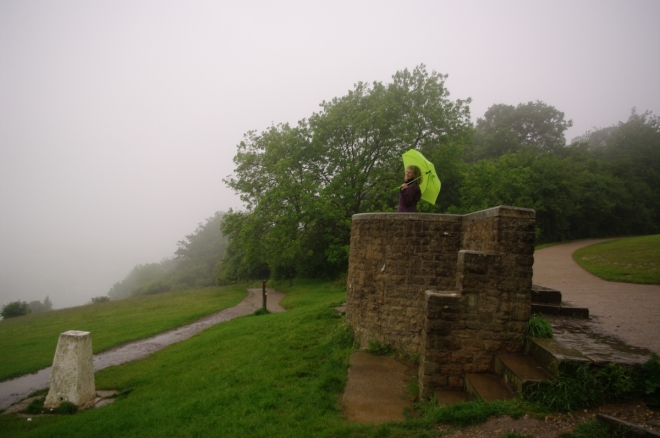

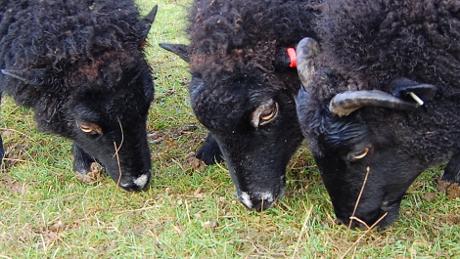
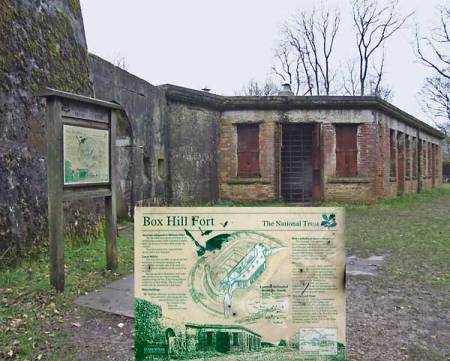
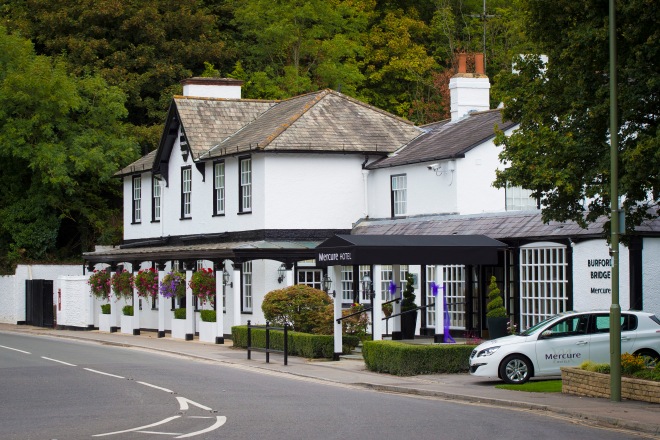
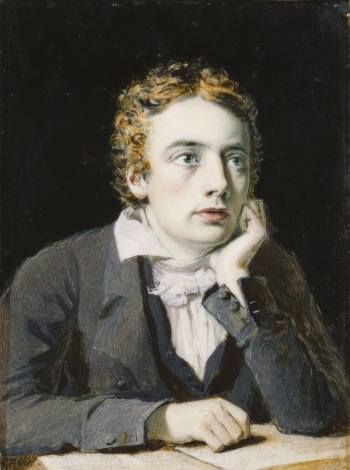


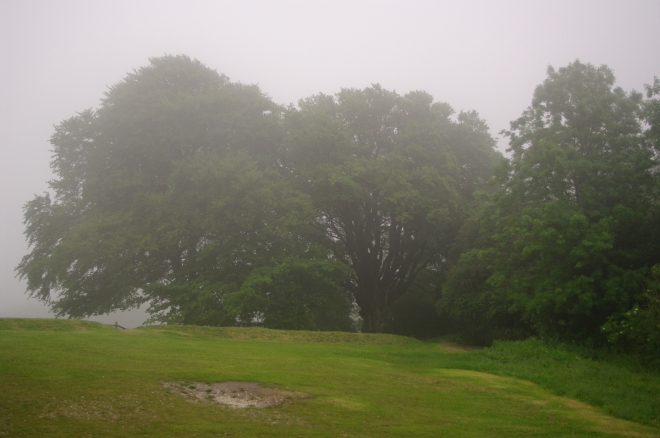
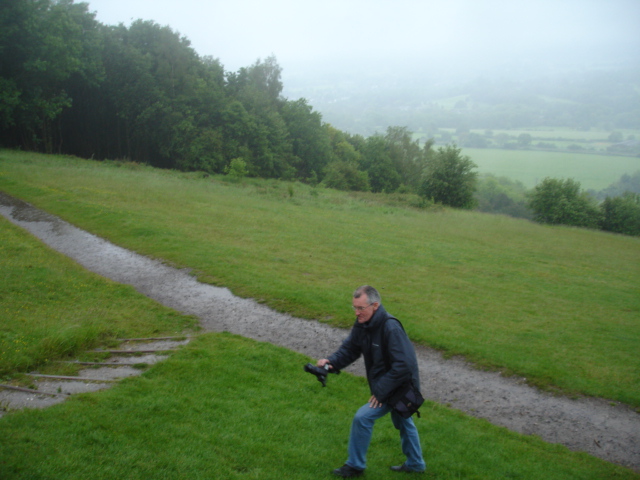
Deb, what a glorious day! I love mist and fog and rain. And, of course, I envy you your tour guide as well! Tony, I always learn so much from your posts.
LikeLike
Yes, Jean, the fog, mist and rain made for its own beauty – you should have seen us at Portsmouth running around the harbor in the wind and rain – we spent an inordinate amount of time on The Victory to stay dry! One of these days I will post my pictures of it all – seeing Southampton where Jane lived for 2 years and all the plaques around noting her presence was also a rather wet adventure! Tony is a very informed guide coupled with a true love of all of England! Even the Rain could be ignored…
Thanks for stopping by, as always.
LikeLike
Great post! At the risk of asking for too much of a share in the conversation…I would vote for the Victorian Poet George Meredith as a notable Box Hillian. Perhaps not on his own merit alone but also for his poem “The Lark Ascending”. It was incorporated into Ralph Vaughan Williams(RVW) beautiful classical piece by the same time. In a poll by the light classical station Classic FM, “The Lark” has recently been voted #1 or #2, or #3 in the UK. RVW grew up 6 miles from Box Hill. Also, in his middle years he moved to Dorking from London(his 1st wife was in poor health). There is a statue of RVW in Dorking. And in TMI…I played a bit of The Lark Ascending at Chawton House. Lol, when I was at Box Hill, I quoted Mr. Knightley from Emma 09 “It’s the same county, it’s not the moon”.
LikeLike
And I now see I missed George Meredith was listed in the article! Sorry about that!
LikeLike
Excellent addition to the post Kirk and Meredith is certainly worthy of TWO mentions! When you were atop Box Hill quoting the ’09 Mr Knightley, did you have a clear day??
Thanks for sharing!
Deb
LikeLike
Hi Deb! Thanks for asking about a clear day….I didn’t want to mention that as you didn’t. Yes, I lucked out with clear days in the UK. I think there was only day that was completely rainy/foggy(London Museum Day). What’s up with that? And thank you Tony for your response! I thought the RVW statue was perfect and so so so worth the trip.
LikeLike
Absolutely outstanding post! What a wonderful mix of history, geology and literary analysis. I’ve always wondered about chalky soil since seeing the old and intriguing film, The Chalk Garden. Many thanks.
LikeLike
Yes, Lynne, Tony manages to bring in all possible subjects – from Emma to chalk to black mountain sheep! – he says he learned this from reading Moby Dick!
Thanks for stopping by.
LikeLike
Thank you everybody for all your kind comments. Kirk, I didn’t mention Ralph Vaun Williams partly because he is more associated with Leith Hill and of course Dorking. But thank you for adding him. We can all emphasise different points of interest.There is a wonderful statue of him outside of Dorking Halls. Then of course there is also the Dickens connection with Dorking. The elder Sam Weller ran a pub in Dorking High Street which Dickens calls The Marquis of Granby but has a different name now. (Pickwick Papers, the most hilarious book I have ever read)
And Deb, don’t you think the ballroom in The Dolphin could stage a brilliant re-enactment of Jane Austen’s 18th birthday???? JASNA must send a ,”boarding,” party over one day and get things organised!!!!
All the very best,, Tony
LikeLike
Yes, Yes – a party at the Dolphin would be the very thing! I’ll see what I can do!
LikeLike
Thank you for a lovely & informative virtual visit!
LikeLike
Also in “Enchanted April” Mrs Fisher (Joan Plowright) mentions George Meredith and Box Hill.
LikeLike
Thank you Lottie for that reference!
LikeLike
Thank you for all your kind comments. Tony
LikeLike
Pingback: Assembly Rooms, February 2015 » The Beau Monde
“If you look on a map you can measure from Malden Rushett cross roads, seven miles to Box Hill, sixteen miles to London, twelve miles to Richmond and nine miles to Kingston – the exact distances from Highbury and Hartfield that Jane Austen reveals in Emma.”
Highbury in “Emma” is in reality based on Leatherhead. In a letter he wrote to Lord Arthur Russell dated 21 October 1869, James Edward Austen-Leigh said his aunt Jane Austen told him Highbury is Leatherhead, Surrey.
Leatherhead is 9 miles from Kingston, 12 miles from Richmond, and 7 miles from Box Hill, the same as Highbury in the novel. (The reason Leatherhead is 7 miles from Box Hill is that in the novel the characters travel from Leatherhead to Box Hill via Headley, a distance of exactly 7 miles). Highbury in the novel is described in the novel by Frank Churchill as being 18 miles from Manchester Street in London, where Jane Austen’s cousin Eliza de Feuillide resided in 1797.
The sale particulars of Thorncroft Manor in 1814, upon which Emma’s house of Hartifield was based in the novel, describe it as being 19 miles from London. As it is 1 mile south of Leatherhead this places it in exactly the right place to be the basis for Hartfield in the novel. Thorncroft Manor was owned by Juliana Boulton, who was the sister of Eliza de Feuillide’s friend, the poet and dramatist Lady Sophia Burrell.
LikeLike
Pingback: Emma Woodhouse’s Surrey | Jane Austen's World
Pingback: Assembly Rooms, February 2015 – The Beau Monde RWA™ Chapter Website
Pingback: JANE AUSTEN’S SURREY: The Novels as Inspiration by Tony Grant | Jane Austen's World
Pingback: Visiting Great Bookham: Church of St Nicolas (and, Box Hill) | Jane Austen's World